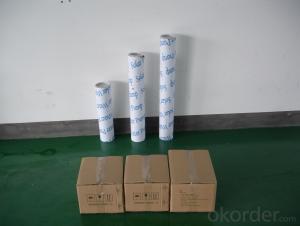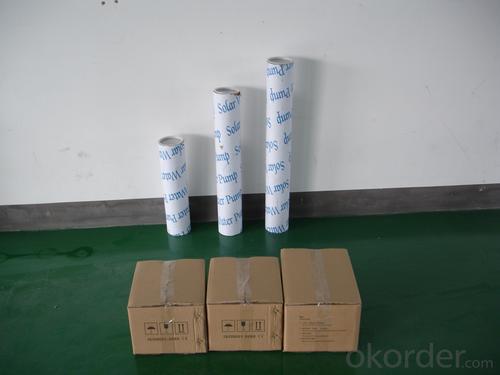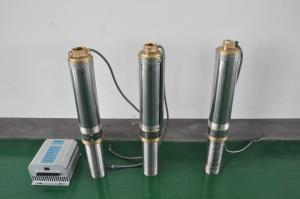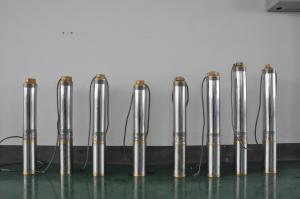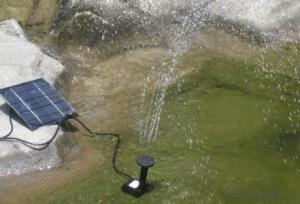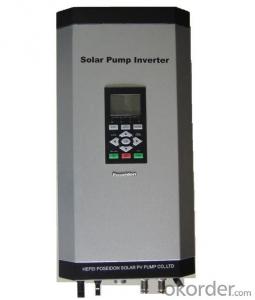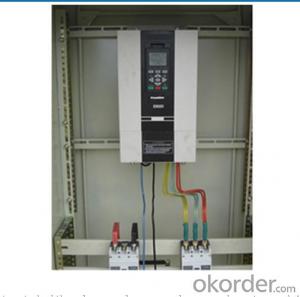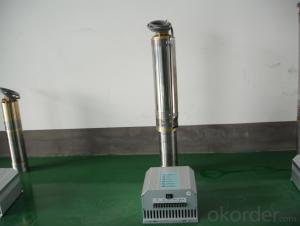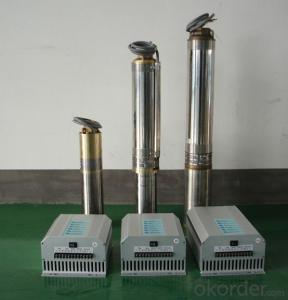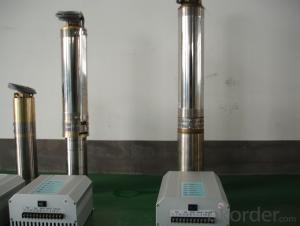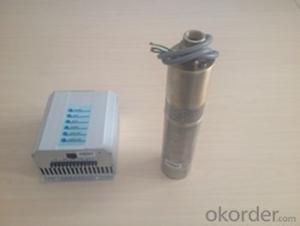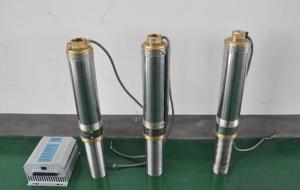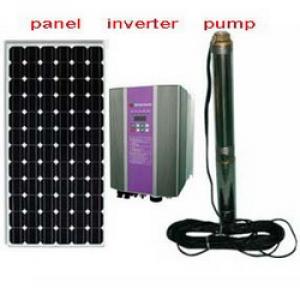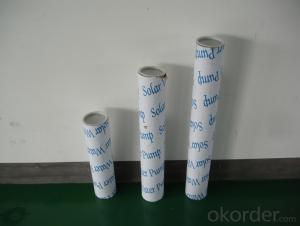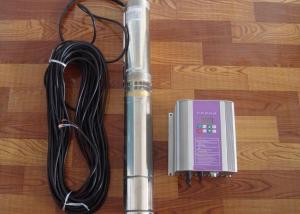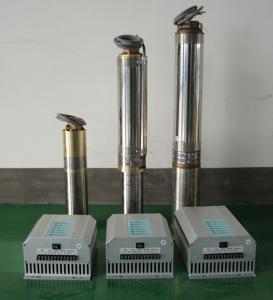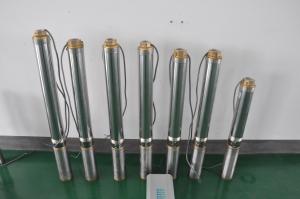24 Volt Solar DC Water Pumps
- Loading Port:
- China Main Port
- Payment Terms:
- TT OR LC
- Min Order Qty:
- -
- Supply Capability:
- -
OKorder Service Pledge
OKorder Financial Service
You Might Also Like
Item Description :
This superb new addition to our solar fountain range comes with a 10w solar panel,and a powerful fountain pump that is capable of producing fountains of up to 2m in height. As well as being easy to set up and use.Instruction manual is supplied for assembly and maintenance.
Solar Fountain Key Features :
Powered by direct sunlight
No high voltage electric mains required
Safe for children
Max. height of fountain: 2M
Max. flow capacity: 800 L/H(176 GAL)
10W Polycrystalline solar panel included
18V DC brushless pump
Solar Pump Features :
Can produce fountains up to : 2M (tube height) 1.4M (fountain height)
Comes with multiple nozzle accessories
Cable Length : 5M
Solar Panel Features :
10W peak power.
Polycrystalline highly efficient solar panel
Comes mounted in aluminium frame
Comes with ground stake and rotating knob so you can angle your panel toward the sun
What You Will Get :
10W solar panel
Solar pump
Ground Sake
Nozzle accessories
Precautions :
DO NOT alter or change the product itself or its components
Operate pump in freshwater only, never above 50 degrees celsius
Keep away from flammable liquids
Do not connect to any other power supply other than the included
- Q: What is a solar pump?
- A solar pump is a device that uses solar energy to power a water pump. It converts sunlight into electricity, which is then used to run the pump and draw water from a well, borehole, or other water source. This technology is commonly used in areas with limited access to electricity or where traditional fuel-powered pumps are not feasible.
- Q: How does the performance of a solar pump vary with different pumping distances?
- The performance of a solar pump can change depending on the distance it needs to pump. When the pumping distance increases, the solar pump's performance may decrease due to various factors. One of the main factors that affects a solar pump's performance at different pumping distances is the vertical distance or head height that the water needs to be lifted. The higher the head height, the more energy the pump needs to lift the water, which can result in reduced performance. Solar pumps have a maximum head height they can reach, and exceeding this limit can lead to a decrease in flow rate and efficiency. Moreover, the distance between the pump and the water source can also impact its performance. As the pumping distance increases, there can be friction losses in the pipes, which can cause a decline in performance. The longer the distance, the more significant these friction losses become, resulting in reduced flow rate and efficiency. Furthermore, the size and capacity of the solar pump also contribute to the variation in performance. Different pumps have different power ratings and flow rates. It is crucial to choose a pump that can efficiently handle the required flow rate and head height when selecting a solar pump for a specific pumping distance. It is essential to consider that the performance of a solar pump can also be affected by other factors such as the quality and condition of the solar panels, the amount of sunlight available, and the overall system design. Therefore, it is recommended to consult with a solar pump expert or supplier to determine the most suitable pump for a specific pumping distance, ensuring optimal performance.
- Q: Can a solar pump be used for water supply in disaster-stricken areas?
- Yes, a solar pump can be used for water supply in disaster-stricken areas. Solar pumps are an effective and sustainable solution as they rely on solar energy to power the pump and do not require electricity from the grid. This makes them ideal for areas where there may be power outages or limited access to electricity. Additionally, solar pumps are easy to install and maintain, making them a practical choice for emergency situations.
- Q: How does a solar pump handle power fluctuations in the electrical grid?
- A solar pump is not affected by power fluctuations in the electrical grid as it operates independently using solar energy. It is not reliant on the grid for power supply, ensuring consistent and uninterrupted operation even during fluctuations or power outages.
- Q: How does a solar pump handle water quality monitoring?
- A solar pump generally does not handle water quality monitoring directly. However, it can be integrated with other technologies or sensors that monitor water quality parameters such as pH levels, turbidity, or contaminants. These sensors can be connected to the solar pump system, allowing users to assess and monitor the quality of water being pumped.
- Q: What is the maximum suction lift of a solar pump?
- The maximum suction lift of a solar pump depends on various factors such as the type and model of the pump, the size and quality of the suction line, and the operating conditions. However, in general, the maximum suction lift for a solar pump is typically around 6 to 8 meters (20 to 26 feet). It is important to note that exceeding the maximum suction lift can lead to reduced performance, cavitation, or even pump failure. Therefore, it is recommended to consult the manufacturer's specifications and guidelines to determine the specific maximum suction lift for a particular solar pump.
- Q: Can a solar pump be used in saltwater applications?
- Yes, a solar pump can be used in saltwater applications. However, it is important to use a pump specifically designed to handle the corrosive nature of saltwater to ensure longevity and optimal performance.
- Q: How does a solar pump work?
- A solar pump works by converting sunlight into electricity through solar panels. This electricity is then used to power the pump, which draws water from a source such as a well or a stream. The pump pushes the water through pipes or hoses to the desired location, such as a storage tank or irrigation system. Since it relies on solar energy, it operates without the need for grid electricity, making it a sustainable and cost-effective solution for water pumping.
- Q: Can a solar pump be used for fountain or decorative water features?
- Yes, a solar pump can definitely be used for fountains or decorative water features. Solar pumps are an eco-friendly and cost-effective alternative to traditional electric pumps. They are designed to harness the power of the sun and convert it into energy to operate the pump, making them perfect for outdoor water features that may not have access to electricity. Solar pumps are available in various sizes and capacities, allowing you to choose one that suits the specific needs of your fountain or decorative water feature. Additionally, they are easy to install and require minimal maintenance, making them a convenient option for enhancing the aesthetics of your outdoor space while being environmentally conscious.
- Q: Can solar pumps be integrated with existing water systems?
- Yes, solar pumps can be integrated with existing water systems. The use of solar pumps allows for a sustainable and environmentally friendly approach to water pumping. By harnessing solar energy, these pumps can effectively pump water and be seamlessly integrated into existing water systems, reducing dependency on traditional energy sources and lowering operational costs.
Send your message to us
24 Volt Solar DC Water Pumps
- Loading Port:
- China Main Port
- Payment Terms:
- TT OR LC
- Min Order Qty:
- -
- Supply Capability:
- -
OKorder Service Pledge
OKorder Financial Service
Similar products
Hot products
Hot Searches
Related keywords
